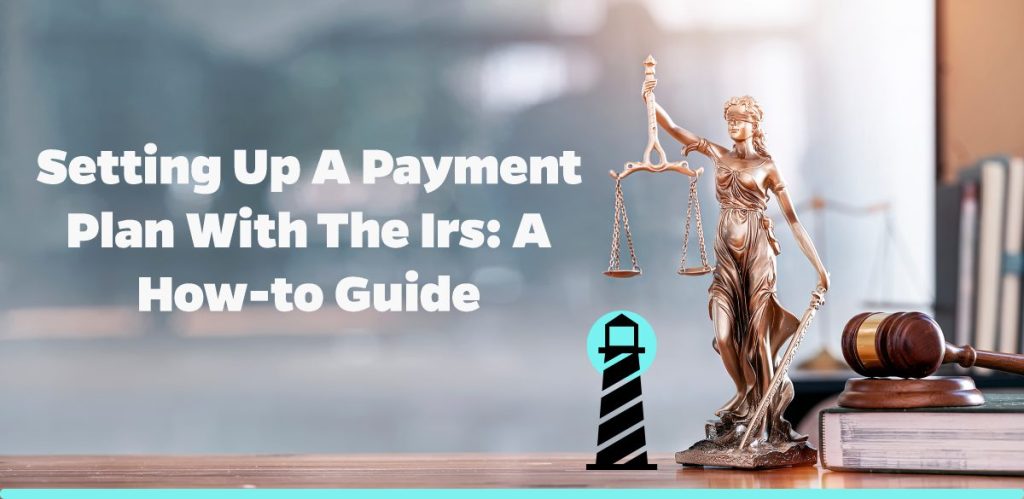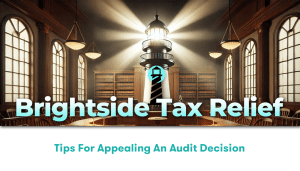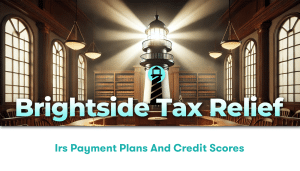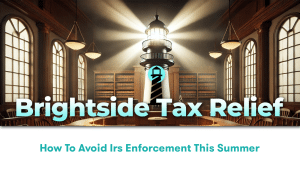Understanding the Need for a Payment Plan with IRS
We at Brightside Tax Relief LLC understand that managing your taxes can often be a stressful and confusing experience, especially when you find yourself unable to pay your tax bill in one lump sum. This is where setting up a payment plan with the IRS comes into play. A payment plan, or an installment agreement as it is officially known, provides taxpayers with a manageable avenue to settle their tax debt over time rather than bearing the financial burden of an immediate, full payment. There are various forms of payment plans tailored to fit different sets of circumstances that we will go on to discuss in this article.
Identifying the Types of IRS Payment Plans
The IRS offers four main types of payment plans:
– Short-term payment plan: This is applicable to individuals who can pay their tax debts within 180 days.
– Long-term payment plan: Designed for individuals who need more than 180 days to settle their tax debts.
– Individual full payment agreement: For taxpayers who can make a single, full payment to immediately clear their tax debt.
– Business payment agreement: Tailored for businesses that need to pay off tax debts over a time period.
It is crucial to identify the type of payment plan that best suits your financial circumstances. This decision can significantly influence your tax relief journey.
Eligibility Criteria for an IRS Payment Plan
Not everyone can avail of a payment plan with the IRS. To qualify for a payment plan, you need to meet specific eligibility criteria set forth by the IRS.
– Tax filing: You must have filed all required tax returns.
– Verification of identity: It is essential to verify your identity to the IRS.
– Previous payment plans: Any prior payment plans should not be defaulted.
– Amount due: The total amount due differs according to the type of payment plan you choose.
Since eligibility requirements can vary based on the type of payment plan, it is wise to consult with a tax professional to ensure you meet all necessary criteria.
Steps to Set Up a Payment Plan with the IRS
Although the process might seem daunting at first, we at Brightside Tax Relief LLC are here to guide you every step of the way towards setting up a payment plan with the IRS.
1. Gather your tax documents: This includes your social security number, tax ID, recent tax returns, and information about your financial accounts.
2. Apply online or by mail: You can apply for a payment plan through the IRS website or by mailing Form 9465, the installment agreement request.
3. Propose your plan: Propose the terms of your plan, including monthly payment amount and due date.
4. Wait for approval: The IRS will review your proposal and determine if it is viable.
5. Start making payments: Once the IRS approves your payment plan, you need to start making payments as per the agreed terms.
The Benefits of a Payment Plan with IRS
Bringing a payment plan into action can spare you from the stress of lump-sum payments and help you avoid penalties.
– Flexible payments: Choose a payment plan that fits your budget.
– Avoid penalties: Incurring more debt due to late payment penalties can be avoided.
– Improve credit score: By making regular, timely payments, taxpayers can work towards improving their credit score.
– Mental peace: Knowing that there’s a plan in place to pay off tax debts over time can provide immense mental relief.
Concluding Notes
Setting up a payment plan with the IRS may sound complicated, but it does not have to be. By seeking proper guidance and taking one step at a time, you can effectively manage your tax debts without unnecessary stress. At Brightside Tax Relief LLC, we stand committed to providing you with a support network throughout this process. Our professional, informative, and easy-to-understand insights into tax matters are designed to bring you the maximum value and help you navigate the complexities of the tax world with ease.




